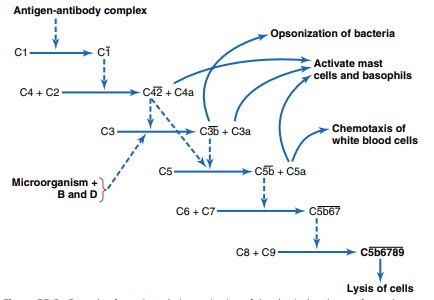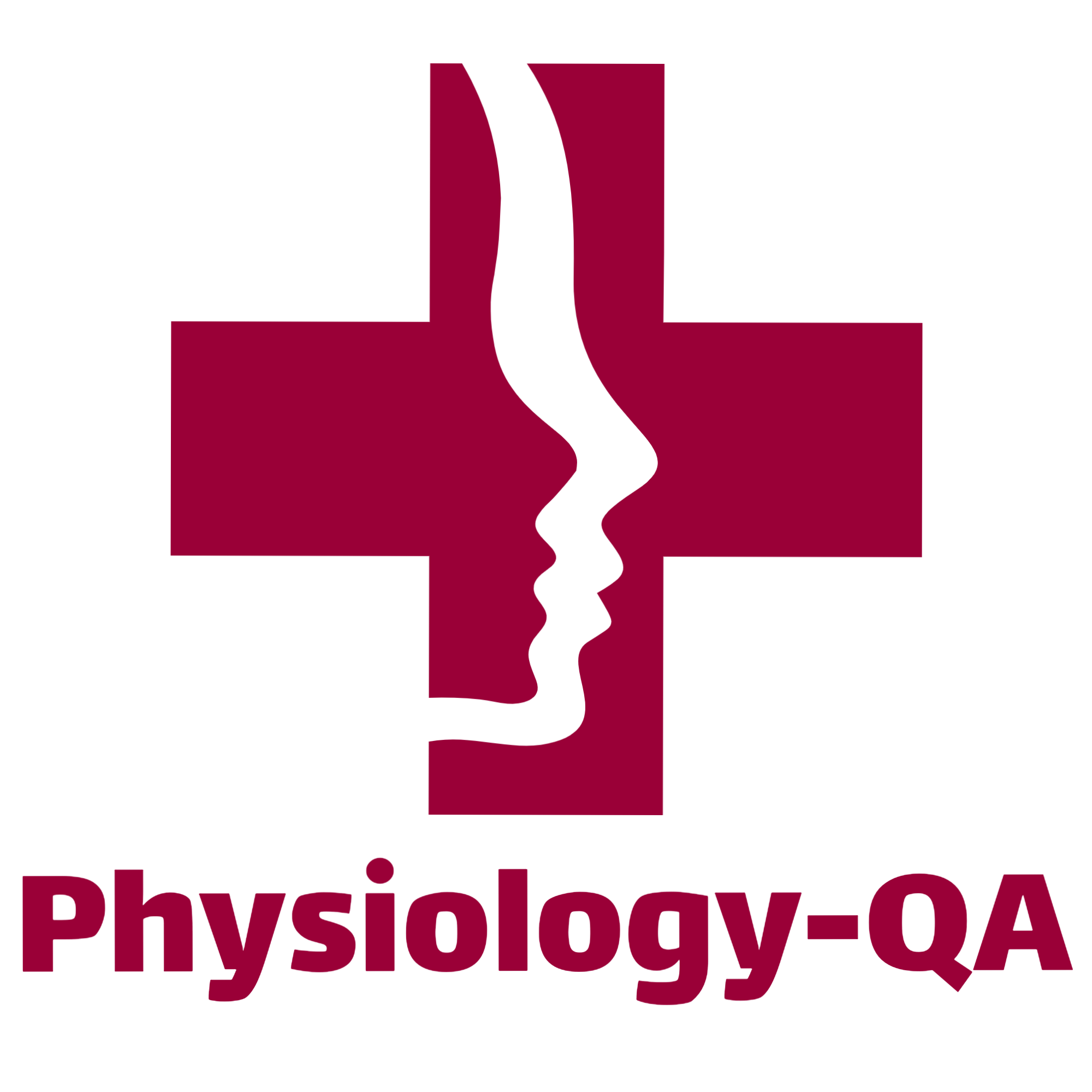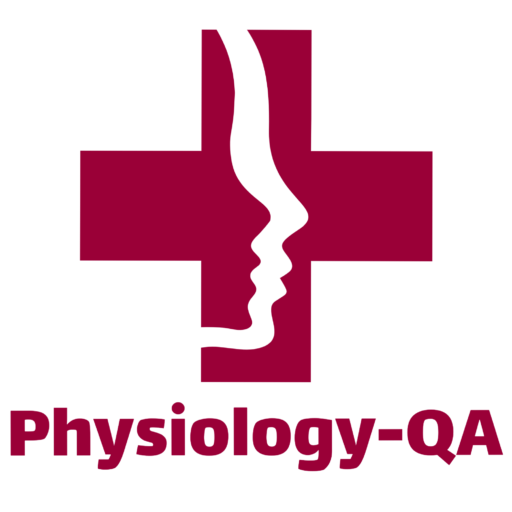Complement system for antibody action
The Complement System
A group of normally inactive proteins (enzymes) blood plasma and on the cell membranes make up the Complement system. It is a defensive system made up of over 30 proteins produced by liver and found circulating in blood and within tissues throughout the body. in
The enzymes are identified by the numbers C1 to C9 (named for the order in which they were discovered). C1 is made up of 3 sub-units, C1q, C1r and C1s, therefore, there are 11 proteins (inactive enzymes) in the system. (Fig. 15.2)
Activation of this system (indicated by small letters a and b) triggers a sequence of ‘cascade’ reactions that activates other components of the system. The active fragments carry out the destructive action of C1 to C9 proteins. The system gets activated by three different pathways all of which activate C3.
(i) Classical pathway-initiated by antibody binding to antigen; The antibody-antigen complex (i.e. immune complex) activates C1 and thus triggers a sequence of events that activates C3.
(ii) Mannose binding lectin pathway initiated when lectin (protein) binds mannose (carbohydrate) groups on the surface of bacteria; and
(ii) Mannose binding lectin pathway initiated when lectin (protein) binds mannose (carbohydrate) groups on the surface of bacteria; and
(iii) Alternative or properdin pathway initiated by polysaccharides on bacterial cell wall (endotoxin), yeast cell wall (zymosan) and tumour cells. Interaction of factor I with polysaccharides in cell membrane of invading cells triggers reactions that activate C3 and C5. Properdin (a circulating protein) stabilizes the activating enzyme complex.
Once activated, the complement system helps in lysing foreign invaders by the following mechanisms:
(i) Insertion of pore-forming molecules (perforins) in the cell membranes of foreign invaders. Ions move through these pores and the cells become lysed by osmosis.
(ii) Formation of the activated fragments C3a and C5a from C3 and C5 respectively. These fragments release histamine from granulocytes, mast cells and platelets.
(iii) Alternative or properdin pathway initiated by polysaccharides on bacterial cell wall (endotoxin), yeast cell wall (zymosan) and tumour cells. Interaction of factor I with polysaccharides in cell membrane of invading cells triggers reactions that activate C3 and C5. Properdin (a circulating protein) stabilizes the activating enzyme complex.
Once activated, the complement system helps in lysing foreign invaders by the following mechanisms:
(i) Insertion of pore-forming molecules (perforins) in the cell membranes of foreign invaders. Ions move through these pores and the cells become lysed by osmosis.
(ii) Formation of the activated fragments C3a and C5a from C3 and C5 respectively. These fragments release histamine from granulocytes, mast cells and platelets. Histamine dilates the blood vessels and increases capillary permeability (produce inflammatory response).
(iii) C5b, C6 and C7 are chemotactic and attract leucocytes to the site of the antigen-antibody reaction.
(iv) C3b is responsible for opsonization and phagocytosis of bacteria. It also initiates reactions that activate the rest of the complement enzymes.
Cascade of reactions during activation of the classical pathway of complement.

Differentiate humoral and cellular immunity
humoral immunity
- Involves the production of antibodies by B cells in response to an invading pathogen
- Antibodies are proteins that bind specifically to the pathogen to neutralize or eliminate it from the body
- Effective against pathogens that are circulating in the bloodstream or outside cells
- Involves the activation of helper T cells to stimulate B cells to produce antibodies
Cellular Immunity
- Involves the activation of T cells in response to an invading pathogen
- T cells can directly kill infected cells or activate other immune cells to attack the pathogen
- Effective against pathogens that have infected cells, such as viruses or intracellular bacteria
- Involves the activation of helper T cells to stimulate cytotoxic T cells or other immune cells to respond to the pathogen

